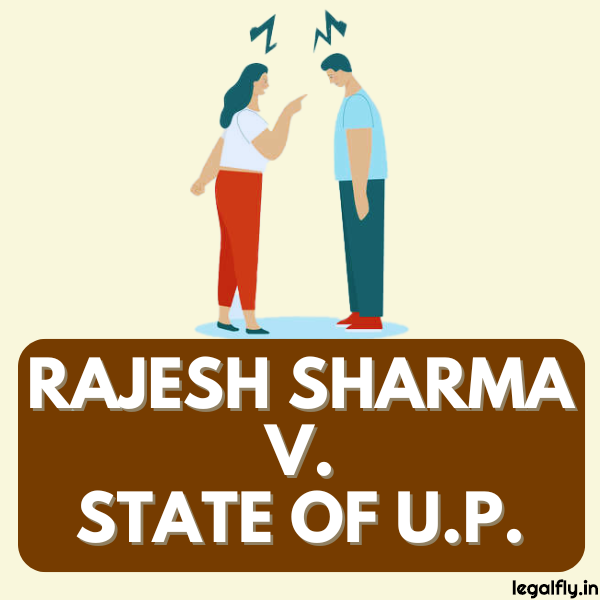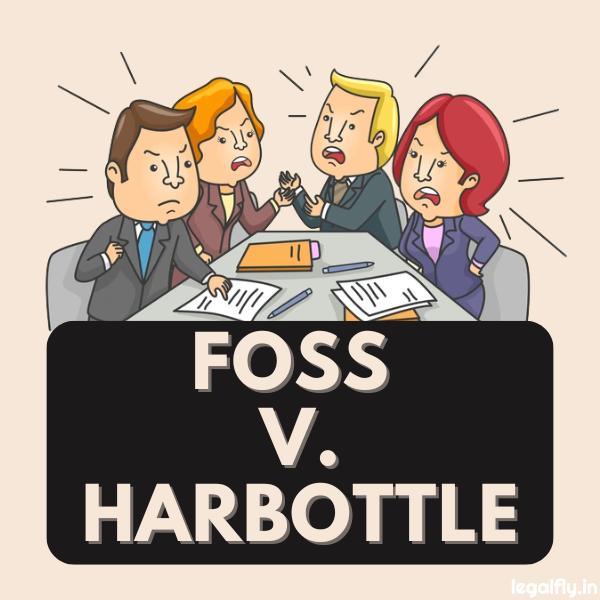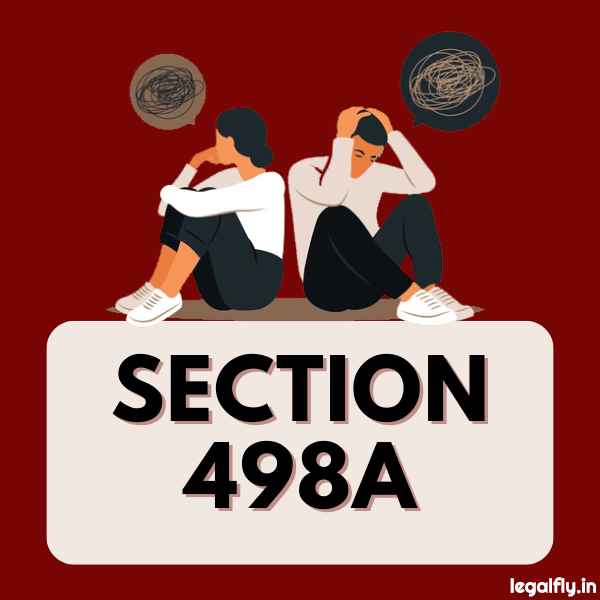Table of Contents
Case Name: Rajesh Sharma v. State of U.P.
Court: Supreme Court of India
Year: 2017
Citation: (2018) 10 SCC 472
Introduction to Rajesh Sharma v. State of U.P.
Section 498A of the Indian Penal Code deals with cruelty towards a married woman by her husband or his relatives. It was enacted in 1983 to protect women from dowry harassment. However, over the years, there have been concerns raised about its potential misuse, leading to the arrest of innocent persons.
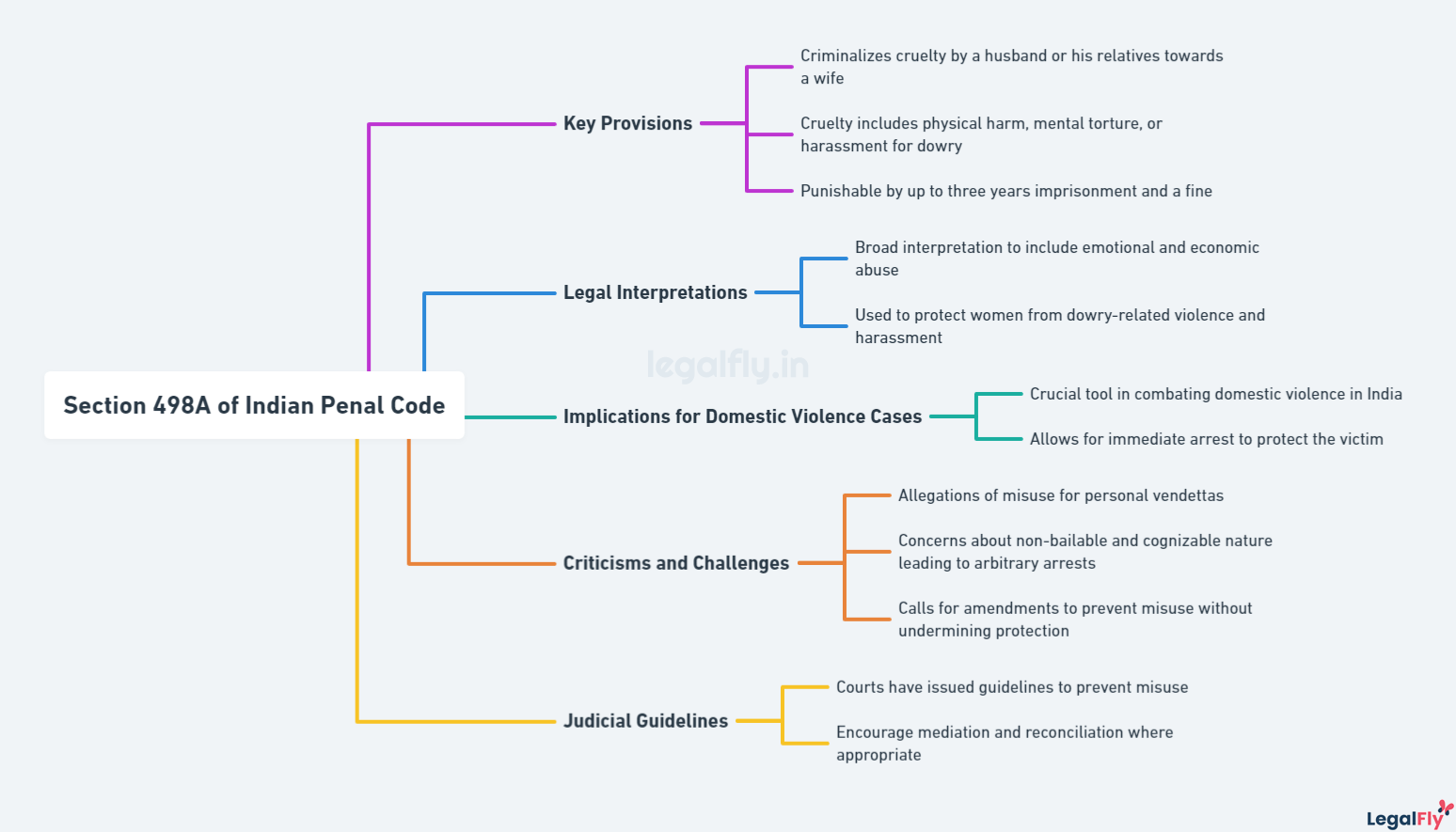
In 2017, the Supreme Court of India delivered a landmark judgment in Rajesh Sharma v. State of U.P. that aimed to check such misuse and prevent arbitrary arrests. This case involved allegations of dowry harassment filed by the wife of Rajesh Sharma against him and his family members.
The Supreme Court laid down detailed guidelines to prevent the misuse of Section 498A and protect citizens from false implications and arbitrary arrests. The Court issued directives for setting up Family Welfare Committees to scrutinize complaints before police action could be taken. The judgment stressed the need to strike a balance between protecting women’s rights and protecting innocent persons from harassment.
The Rajesh Sharma v. State of U.P. case gained significance as a progressive step towards balancing the interests of all parties involved in dowry harassment cases. It had far-reaching implications on police procedures and the rights of accused persons in subsequent cases under Section 498A. The guidelines aimed to foster justice and gender equality in dowry-related legal processes.
Background and Context
Section 498A of the Indian Penal Code (IPC) was introduced in 1983 to address the issue of cruelty and harassment faced by married women. At the time, there was increasing public outcry over dowry deaths and violence against women related to demands for dowry payments.
The social context in India involved prevalent practices of dowry exchange during marriage and subsequent harassment of brides if the promised dowry was not delivered. Section 498A provided legal recourse for women facing “cruelty” from husbands and in-laws.
Over the years, the Supreme Court has delivered various judgments upholding the validity of Section 498A and clarifying its scope. However, concerns also emerged over its potential misuse to harass families with false allegations. The Rajesh Sharma v. State of U.P. case needed to balance protecting women’s rights while preventing abuse of the law.
Key Facts of the Case
The petitioners in this case were Rajesh Sharma and others who had been accused under Section 498A IPC related to dowry harassment. They filed a writ petition in the Supreme Court challenging the constitutional validity of Section 498A.
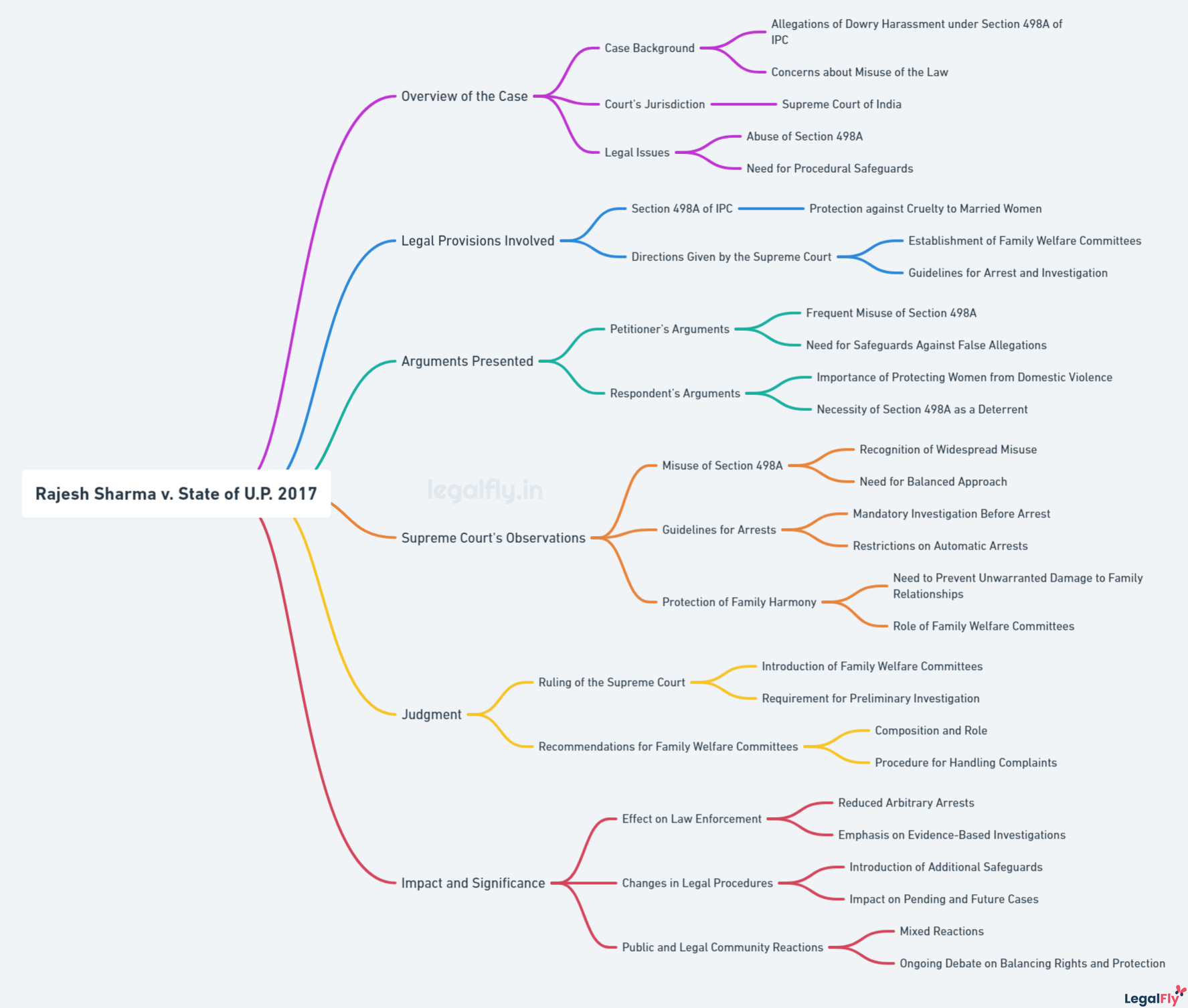
The respondents were the State of Uttar Pradesh and others. The State justified the need for Section 498A to protect women from cruelty and harassment related to dowry demands.
The main arguments raised by the petitioners were:
- Section 498A was being misused to harass innocent family members.
- Police were arbitrarily arresting people without investigation.
- Section 498A violated the principles of natural justice and the presumption of innocence.
The respondents argued that:
- Section 498A was enacted to address a social evil and protect women’s rights.
- The Court must uphold the validity of the law.
- Safeguards can be added to prevent misuse instead of striking down the law.
The case arose from a criminal complaint filed by the wife of Rajesh Sharma, accusing him and his family members of cruelty related to dowry demands. She alleged harassment soon after their marriage in 2012. Based on her complaint, Rajesh Sharma and others were charged under Section 498A IPC. This led them to challenge the law itself.
Legal Issues Addressed
The legal issues addressed in Rajesh Sharma v. State of U.P. centred around concerns over the misuse and arbitrary application of Section 498A IPC in dowry harassment cases.
Allegations of Misuse of Section 498A IPC
The petitioners argued that Section 498A was being increasingly misused to harass husbands and their relatives by filing false cases. Citing statistics, they claimed that many complaints under 498A were being registered but with a very low conviction rate. This, they argued, indicated the law was prone to misuse. The petitioners asserted that immediate arrests upon a complaint ruined reputations and violated rights.
The Supreme Court acknowledged concerns over the misuse of Section 498A and the need to implement safeguards. However, it also recognized the law’s intention to protect women from cruelty and dowry harassment. The Court aimed to strike a balance in interpreting Section 498A.
Allegations of Dowry Harassment
The respondents argued that Section 498A provided much-needed protections for married women facing domestic violence and dowry demands. They asserted that allegations of misuse should not curtail the law, as that would deprive victims of recourse.
The Supreme Court agreed dowry harassment was a serious issue. However, it stated that arrests based solely on complaints could be detrimental even if charges were found false later. Hence, guidelines were needed.
Supreme Court’s Guidelines and Safeguards
The Supreme Court laid down several guidelines and safeguards to prevent the misuse of Section 498A in dowry harassment cases.
Establishing Family Welfare Committees
The Court directed all state governments to establish Family Welfare Committees (FWCs) in every district. These committees would comprise paralegal volunteers, social workers, and retired personnel and examine complaints received by police or magistrates. The FWCs would submit reports to the police to determine if there is merit in the allegations before any arrests are made. This would prevent arbitrary arrests based solely on complaints.
Conditions and Safeguards for Arrest
The Court ruled that police officers cannot automatically arrest the accused in all cases under Section 498A IPC. Arrests should only be made if the allegations seem credible and backed by evidence. Police must follow procedures under the Criminal Procedure Code and require District Legal Service Authority lawyers to represent the accused at bail hearings.
Role of Police and Judicial Authorities
The Court directed police officers and magistrates to be vigilant against false implications of innocent family members in Section 498A cases. If complaints are found to be vindictive and unsubstantiated, strict action should be taken against the complainants as per law.
Supreme Court’s Decision
The Supreme Court, in its judgment, laid down several key guidelines and directions aimed at preventing the misuse of Section 498A while also upholding the rights of women. Some of the key points from the judgment are:
- The Court recognized that Section 498A was enacted to combat harassment faced by married women. However, it observed that the provision was increasingly being misused to harass innocent family members.
- It held that arrest should not be an automatic response in all Section 498A cases. The Court directed that Family Welfare Committees should review complaints before arrests are made.
- It issued directives to ensure that police do not arbitrarily arrest accused persons without adequate justification. Arrests should only be made in cases where necessary.
- The Court aimed to strike a balance between protecting women from cruelty and abuse while also safeguarding innocent family members against false implications and arrests.
- It reiterated that Section 498A should be used as a “shield not an assassin’s weapon” and that stringent safeguards were needed against abuse of the law.
In its rationale, the Court highlighted how Section 498A cases had a very low conviction rate, indicating that a large number of cases were being filed without adequate basis. The guidelines were issued keeping in mind principles of justice and fairness and to uphold constitutional protections. The Court sought to prevent unnecessary arrests and protect individual rights while still upholding the original objectives behind Section 498A.
Implications of the Judgment
The Rajesh Sharma v. State of U.P. judgment had significant implications for future cases under Section 498A IPC as well as the broader legal landscape regarding protections for women in India.
Effect on Future Section 498A Cases
The guidelines issued by the Supreme Court fundamentally changed procedures for filing and investigating cases under Section 498A IPC. Police were now restricted from making arrests without approval from Family Welfare Committees, which added an extra layer of review before charges could be filed. This made it more difficult for victims of dowry harassment to get immediate police assistance and relief.
Critics argued this diluted the deterrent effect of Section 498A and empowered accused parties. However, supporters argued it helped curb false allegations that damaged innocent families. The practical enforcement of Section 498A was significantly altered after Rajesh Sharma.
Influence on Legal Protection for Women
Women’s rights activists criticized the judgment for diluting legal protections for married women suffering domestic violence and harassment. The increased barriers to filing complaints and obtaining police assistance were seen as infringing on women’s constitutional rights.
However, the Court maintained that safeguarding women’s rights had to be balanced with protecting men from false accusations. The judgment tried to strike a delicate balance, though its implications sparked debate about whether it actually weakened legal recourse for victims of dowry harassment.
Broader Social and Legal Impact
The Rajesh Sharma v. State of U.P. case fueled ongoing discussions about gender rights, police reforms, and the social issue of dowry practices. It highlighted concerns about the misuse of laws but also reinforced the need to combat customs like dowry that oppressed women.
The judgment impacted legal developments, such as the framing of anti-dowry legislation in 2018. It also influenced police procedures and anti-dowry awareness campaigns. By spurring the debate on women’s rights and police accountability, the case had far-reaching social and legal consequences in India.
Ongoing Relevance
In the years since its passing, the Rajesh Sharma v. State of U.P. judgment has continued to influence legal procedures and protections for women.
The implementation of the guidelines has faced some challenges. Police have not always adhered to the directives, with arrests under Section 498A still occurring without following due process. There have also been reports of non-compliance by authorities, highlighting the need for continued monitoring.
However, the judgment has been frequently cited in subsequent cases dealing with alleged misuse of Section 498A. In 2019, the Supreme Court referred to Rajesh Sharma while issuing guidelines to prevent false FIRs and unnecessary arrests in the Social Action Forum for Manav Adhikar v. Union of India. The Rajesh Sharma guidelines have provided a model for balancing protections against abuse with due process rights.
The judgment has also spurred further legal reforms to address domestic violence while preventing the misuse of laws. In 2018, the Supreme Court called for amendments to dowry prohibition laws to incorporate the Rajesh Sharma safeguards. The case has thus shaped the evolution of legal protections for women in India.
Conclusion
The Rajesh Sharma v. State of U.P. case was a landmark judgment by the Supreme Court that aimed to balance women’s rights against misuse of Section 498A IPC. The key takeaways from the judgment were:
- The Court recognized that Section 498A was being misused in some cases to harass family members, so guidelines were issued to prevent arbitrary arrests. However, the law’s intention to protect women was also emphasized.
- Family Welfare Committees were established to vet dowry harassment complaints before arrests. This provided a safeguard against false allegations but also added an extra procedural step for women.
- Conditions were set for making arrests under Section 498A, such as district police heads approving any immediate arrests. This reduced frivolous arrests, but some felt it deterred even legitimate complaints.
- The role of police and judicial authorities was spelt out to encourage impartial investigation and avoid indiscriminate arrests. However, critics argue it could promote laxity.
- The judgment tried to strike a balance between protecting the rights of women against dowry harassment and preventing the misuse of Section 498A. However, it has drawn some criticism for diluting the law’s potency.
- The case has significantly influenced police procedures and the handling of Section 498A cases. However, concerns remain about its detrimental effects on women’s legal protections.
- There is ongoing debate about appropriately safeguarding women’s rights while curbing potential misuse of the law. The judgment’s legacy lies in fueling this complex discussion within Indian society.
Frequently Asked Questions
What was the outcome of the Rajesh Sharma v. State of U.P. case?
The Supreme Court issued guidelines to prevent the misuse of Section 498A IPC in dowry harassment cases while balancing the rights of women. The main outcomes were:
– Establishing Family Welfare Committees to assess complaints before arrests are made.
– Restricting immediate arrests and requiring approval from senior police officers.
– Issuing procedural safeguards for accused individuals against false allegations.
– Emphasizing that bail should be granted in dowry cases with proper safeguards.
How did the judgment affect arrest procedures in dowry harassment cases?
The Rajesh Sharma v. State of U.P. judgment put checks on immediate arrests under Section 498A by requiring approval from senior police officers. It aimed to prevent innocent individuals from being arrested based only on complaints without investigation. Police were directed to follow due process and collect evidence before arrest.
What are the implications for Section 498A IPC cases?
The guidelines impact police procedures and requirements before arresting someone under Section 498A. Complaints must be evaluated by Family Welfare Committees before arrests. This provides some safeguards against false accusations while still allowing valid complaints to be investigated. However, it also raises concerns about delaying justice for genuine dowry harassment cases.

